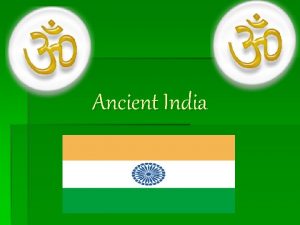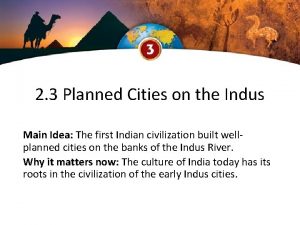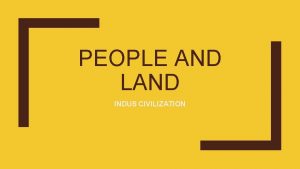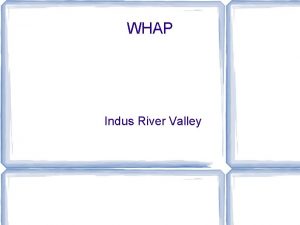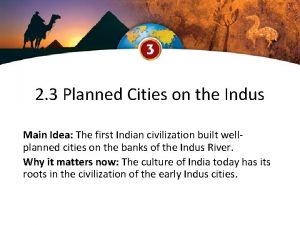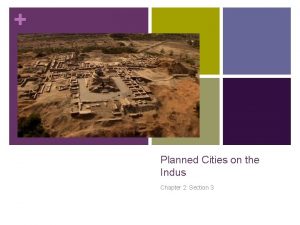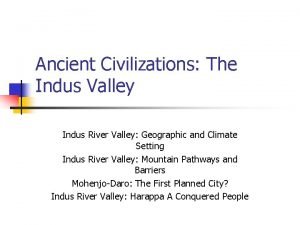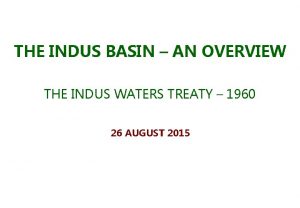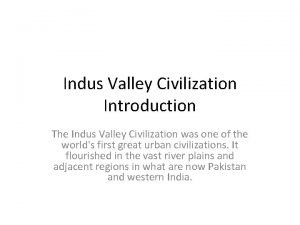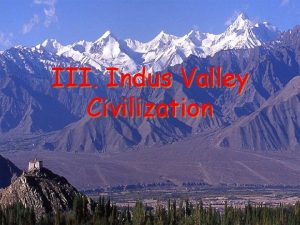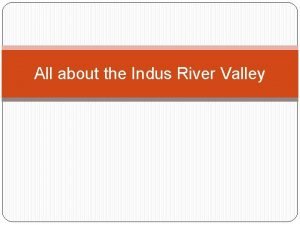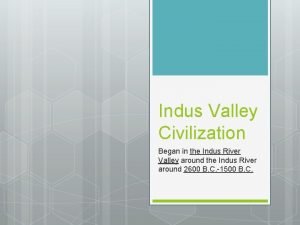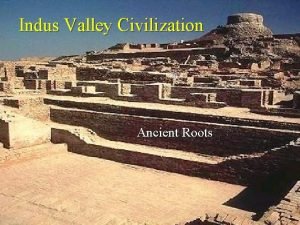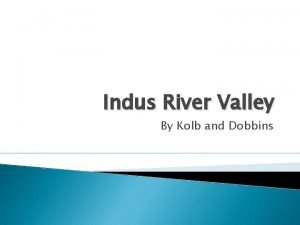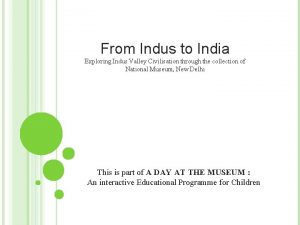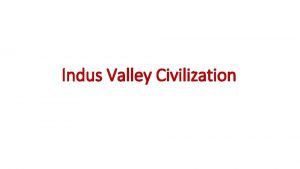2 3 Planned Cities on the Indus Main



















- Slides: 19

2. 3 Planned Cities on the Indus Main Idea: The first Indian civilization built wellplanned cities on the banks of the Indus River. Why it matters now: The culture of India today has its roots in the civilization of the early Indus cities.

Vocabulary • subcontinent: Land mass that is a distinct part of a continent. Example: Indian subcontinent. • monsoon: Seasonal wind • Harappan civilization: Ancient settlements in the Indus River Valley

The Geography of the Indian Subcontinent • Indian Subcontinent – Landmass that includes India, Pakistan, and Bangledesh – World’s tallest mountain ranges separate it from the rest of Asia

The Geography of the Indian Subcontinent • Rivers, Mountains, and Plains – Mountains to north, desert to east, protect Indus Valley from invasion – Southern India, a dry plateau flanked by mountains – Narrow strip of tropical land along coast

The Geography of the Indian Subcontinent • Monsoons – Seasonal winds— monsoons– dominate India’s climate – Winter winds are dry; summer winds bring rain —can cause flooding

The Geography of the Indian Subcontinent • Environmental Challenges – Floods along the Indus unpredictable; river can change course – Rainfall upredictable; could have droughts or floods


Civilization Emerges on the Indus • Indus Valley Civilization – Influenced an area larger than Mesopotamia or Egypt • Earliest Arrivals – About 7000 B. C. E. , evidence of agricultural and domesticated animals – By 3200 B. C. E. , people farming in villages along Indus River


• Planned Cities – By 2500 B. C. E. , people build cities of brick laid out on a grid system. – Engineers create plumbing and sewage systems – Indus Valley called Harrapan civilization after Harappa, a city.


• Harappan Planning – City built on mud-brick platform to protect against flood waters – Brick walls protect city and citadel—central buildings of the city – Streets in grid system are 30 feet wide – Lanes separate rows of houses (which feature bathrooms)

• Language – Had writing system of 300 symbols, but scientists cannot decipher it • Culture – Harappan cities appear uniform in culture, no great social divisions – Animals importance to the culture; toys suggest prosperity


• Role of Religion – Priests closely linked to rulers – Some religious artifacts reveal links to modern Hindu Culture • Trade – Had thriving trade with other peoples, including Mesopotamia.

Indus Valley Culture Ends • Harappan Decline – Signs of decline begin around 1750 B. C. E. – Earthquakes, floods, soil depletion may have caused decline – Around 1500 B. C. E. , Aryans enter area and become dominant

Mohenjo-Daro


Ancient Swastika symbol from the Indus Valley
 Guided reading planned cities on the indus
Guided reading planned cities on the indus Planned cities on the indus
Planned cities on the indus Planned economy or planned destruction political cartoon
Planned economy or planned destruction political cartoon Difference between will and going to future
Difference between will and going to future Whats a supporting idea
Whats a supporting idea Void main int main
Void main int main Trời xanh đây là của chúng ta thể thơ
Trời xanh đây là của chúng ta thể thơ Thế nào là số nguyên tố
Thế nào là số nguyên tố Tỉ lệ cơ thể trẻ em
Tỉ lệ cơ thể trẻ em Tia chieu sa te
Tia chieu sa te đặc điểm cơ thể của người tối cổ
đặc điểm cơ thể của người tối cổ Các châu lục và đại dương trên thế giới
Các châu lục và đại dương trên thế giới Hệ hô hấp
Hệ hô hấp ưu thế lai là gì
ưu thế lai là gì Các môn thể thao bắt đầu bằng tiếng bóng
Các môn thể thao bắt đầu bằng tiếng bóng Tư thế ngồi viết
Tư thế ngồi viết Bàn tay mà dây bẩn
Bàn tay mà dây bẩn Hình ảnh bộ gõ cơ thể búng tay
Hình ảnh bộ gõ cơ thể búng tay Cách giải mật thư tọa độ
Cách giải mật thư tọa độ Tư thế ngồi viết
Tư thế ngồi viết
